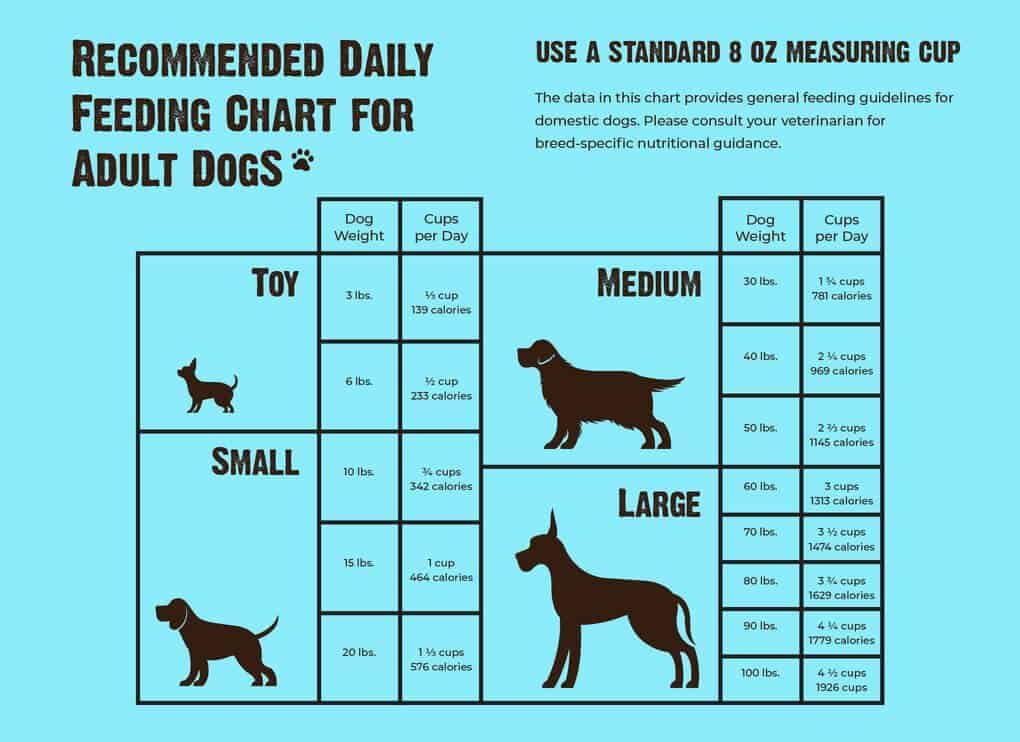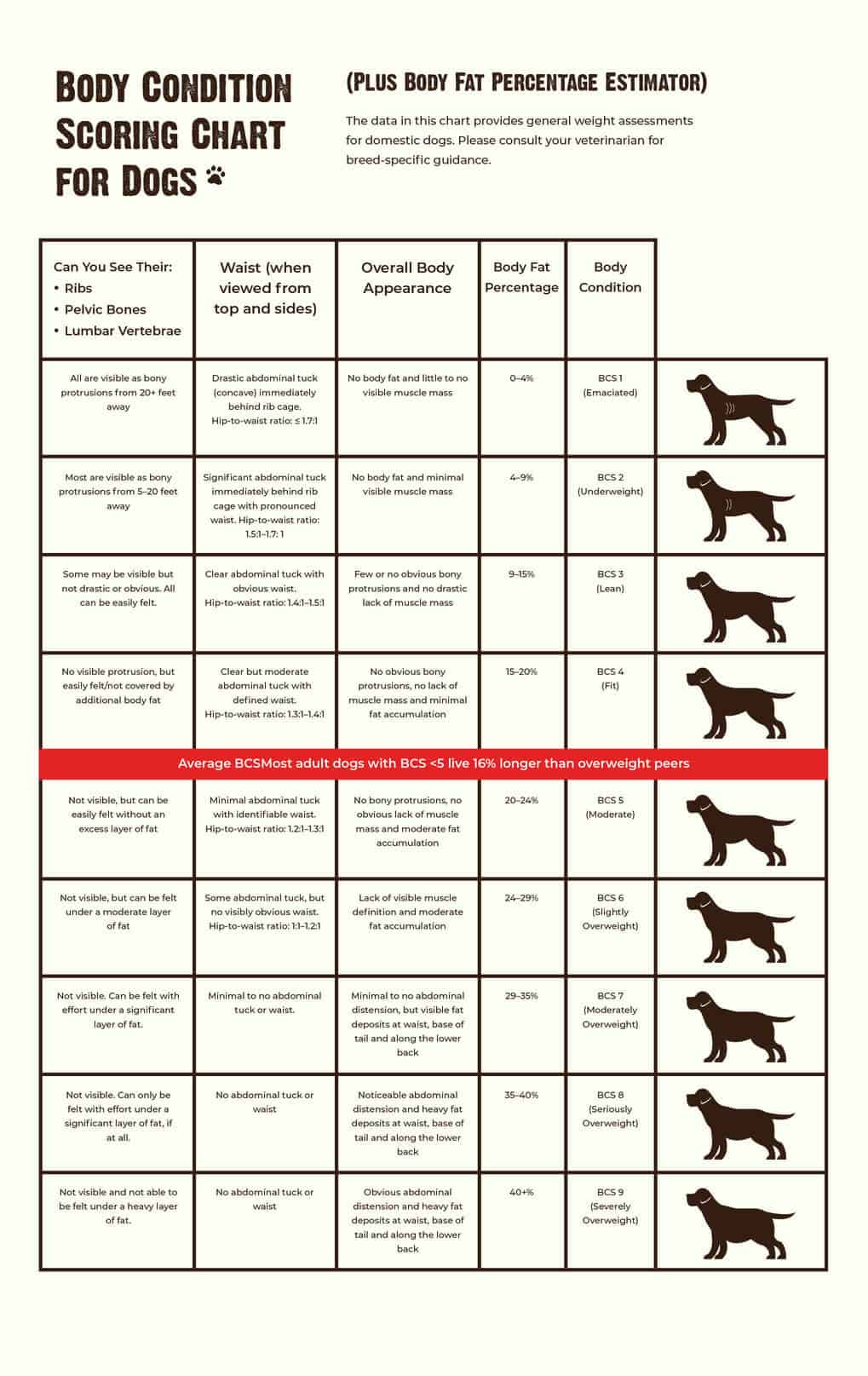Most dog owners are familiar with the “Feeding Guidelines” found on the side of the pet food bag that tell pet parents how much of that food to feed their pet per day. As useful as these AAFCO (American Association of Feed Control Officials) guidelines are, as with all generalized recommendations, these canine feeding guidelines have some limitations. In this post, we’ll discuss the factors to consider when determining how much to feed your dog.
Life Stages of Dogs - Pet Nutritional Requirements
The AAFCO nutritional adequacy statement found on all pet food labels assures pet parents that the food meets certain nutritional requirements. The statement will typically be followed by the life stage or stages it’s most appropriate for: Adult Maintenance, Gestation/Lactation/Growth or All Life Stages (ALS). Of course, all dogs will vary in terms of their calorie and nutritional needs, but knowing your dog’s life stage is a good start.
- Adult Maintenance: Designed to be nutritionally adequate for dogs who have finished growing (12–24 months, depending on the breed)
- Gestation/Lactation or Growth/Reproduction: Adequate for puppies or nursing mothers
The AAFCO technically only recognizes two life stages (Maintenance and Gestation/Lactation/Growth), but dog foods labeled ALS imply that they fit the nutritional requirements for both.
Other factors to consider when determining how much to feed your dog include:
- Activity Level: Perhaps the most important variable at play is your pet’s activity level. Greater energy expenditure (activity) requires more fuel in the form of calories (energy).
- Age: Like humans, a dog’s metabolic needs fluctuate as they age. During the mothering and growth stages, nutritional needs spike. And while the resting metabolic rate slows in senior dogs, energy levels and activity decrease. This is when weight gain can become a new concern, if it wasn’t previously.
- Breed: Certain breeds are more prone to health issues than others and may require diet alterations as a form of prevention. Be aware of breed-specific diets, however, since these are generally more about marketing tactics than evidence-based guidance. The likelihood of a health issue typically has more to do with a dog’s size, age and activity level, rather than their breed, and these should be the primary factors considered when determining a dog’s food intake.\
How Often Do You Feed a Puppy?
Early in a puppy’s life, small, frequent meals throughout the day are necessary to facilitate their transition from their mother’s milk to eating a solid diet. At 4 weeks old, puppies can begin to wean onto solid food. At 2 months, puppies can start eating three solid meals a day until they reach 6 months. Once the puppy reaches maturity at 6 months, their food intake can be reduced to twice-a-day meals. Consult your veterinarian for specific guidance on how to transition your puppy to solid food.
How Food Intake Can Impact Your Dogs Health
As with any living organism, dogs have a range within which their weight should fall to be considered healthy. It is estimated that over half of pets in the United States are overweight, so it’s crucial that pet parents are aware of the risks of overconsumption in order to prevent them. For dogs, the consequences of obesity include:
- Arthritis
- Bladder/urinary tract disease
- Cancer
- Chronic kidney disease
- Diabetes
- Heart failure
- High blood pressure
- Liver disease
- Low thyroid hormone production
Though it may take some experimentation and planning up front, determining an appropriate eating plan for your dog is much more cost-effective and beneficial than treating one of these conditions later on.
How Much Should I Feed My Dog?
Dogs require different amounts of food based on their size, breed, weight and life stage. To determine how much food your dog needs to live their healthiest life, consult this recommended daily feeding chart.
Recommended Daily Feeding Chart for Adult Dogs
The data in this chart provides general feeding guidelines for domestic dogs. Please consult your veterinarian for breed-specific nutritional guidance.

How Much Should My Dog Weigh?
Determining a healthy weight for a dog isn’t as simple as landing on a number. After all, with domestic canine breeds ranging from Great Danes to Toy Poodles, a more comprehensive metric is needed for assessing dog fitness.
Fortunately, Body Conditioning Score (BCS) is an incredibly useful tool that fits the bill. Similar to a Body Mass Index (BMI) scale for humans, a BCS rates an animal’s body size on a scale from 1–5, or 1–9 to allow for more specification. In either version, 1 equals very thin and 5 or 9 equals obese. On a scale of 1–5, a dog with a healthy weight would score 2.5 or 3. Refer to the chart below to learn how to gauge your dog’s BCS.
Body Condition Scoring Chart for Dogs (Plus Body Fat Percentage Estimator)
The data in this chart provides general weight assessments for domestic dogs. Please consult your veterinarian for breed-specific guidance.

Does your dog have a healthy BCS? Incorporating minimally processed or whole foods into your dog’s diet can help them achieve and maintain a healthy weight, whether they’re there yet or not. If you’re considering a change or want to learn more about a raw diet for dogs, RAWZ is your resource for optimal pet nutrition through better food.





